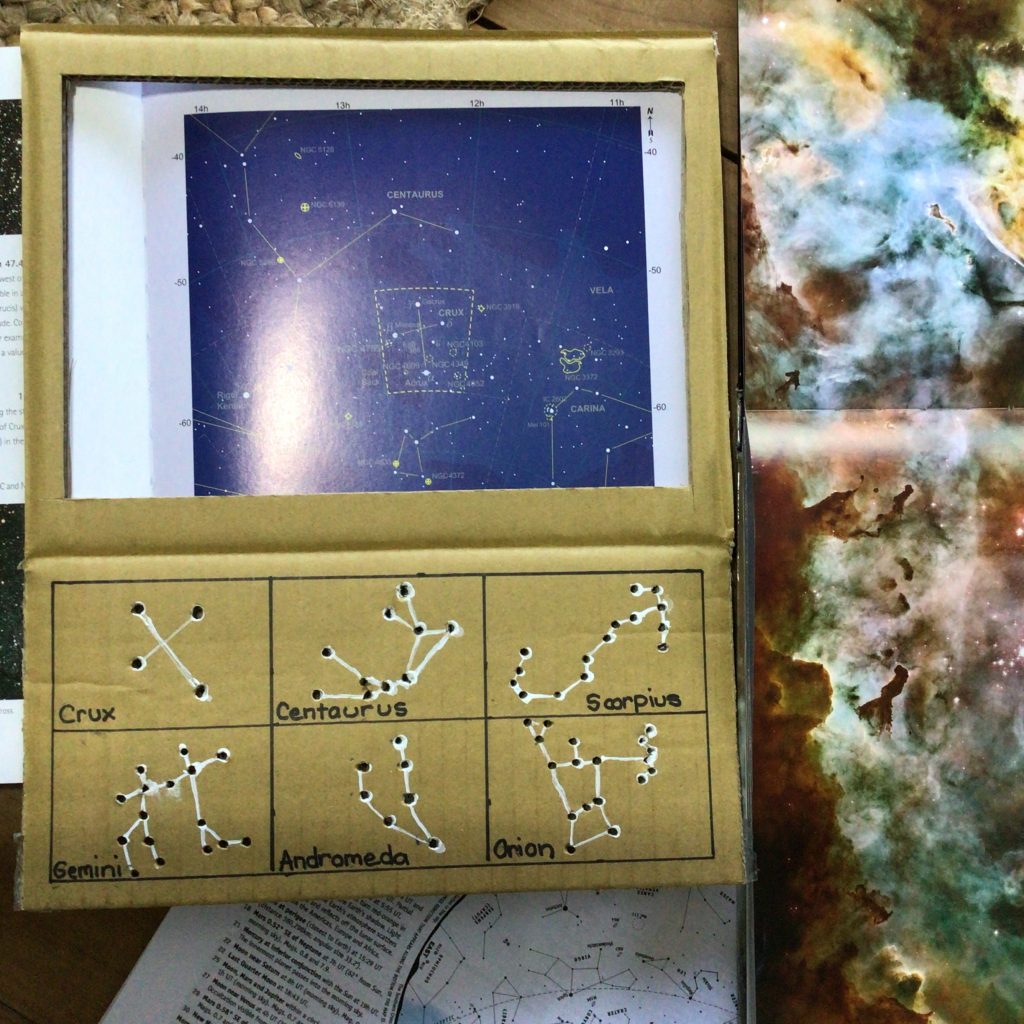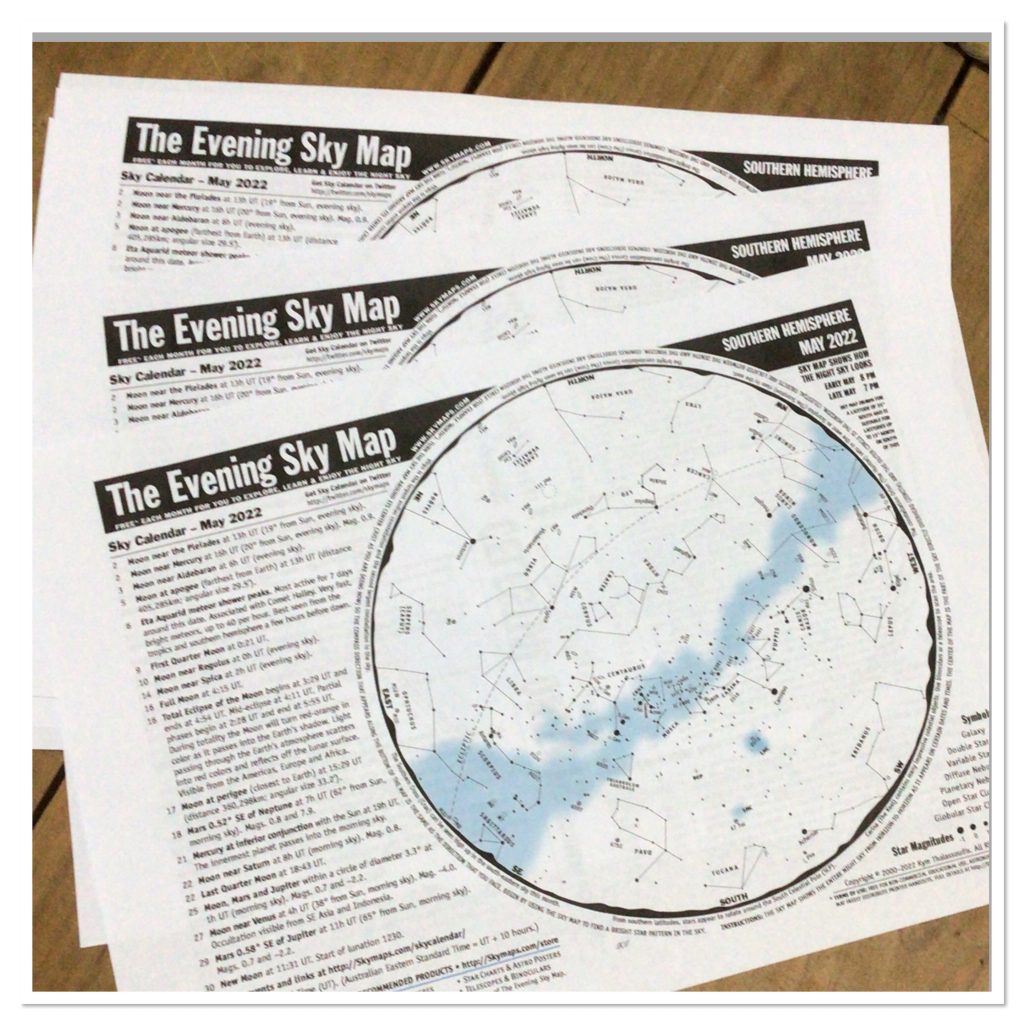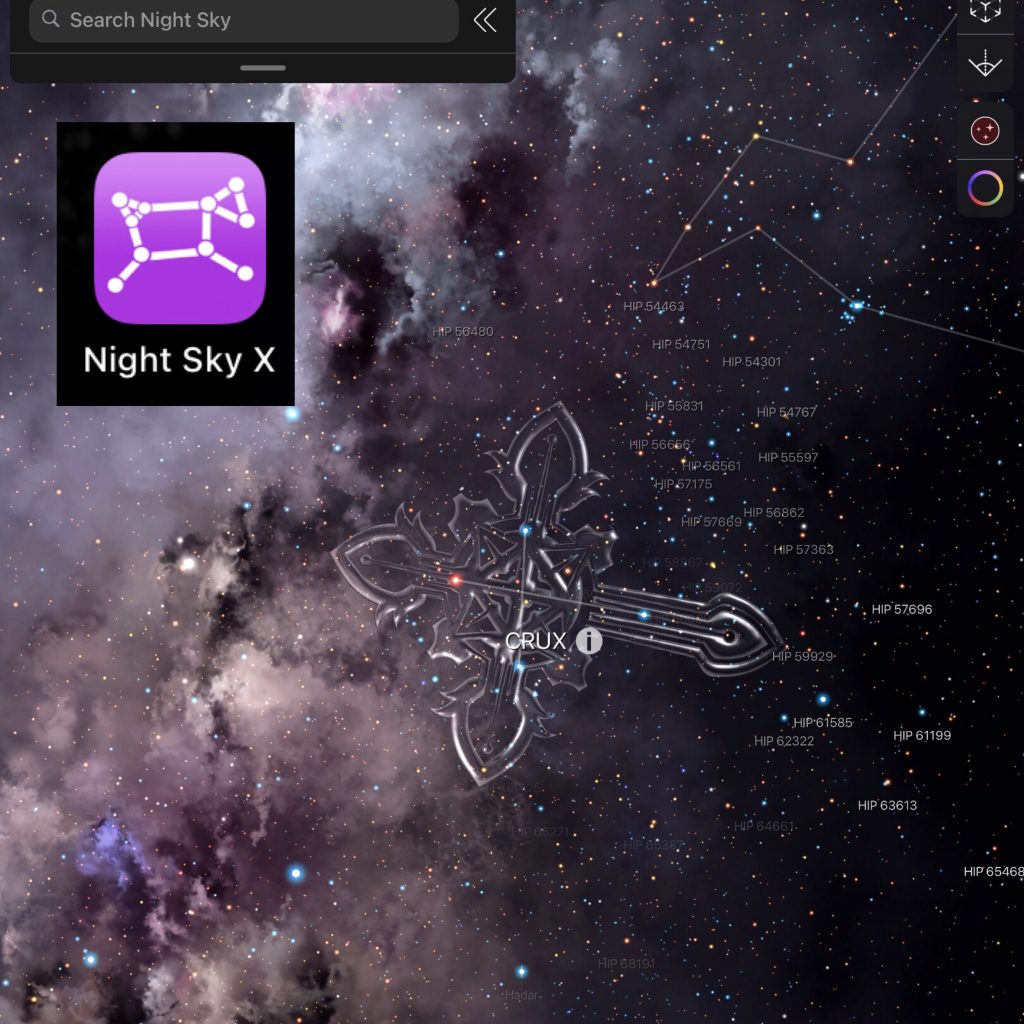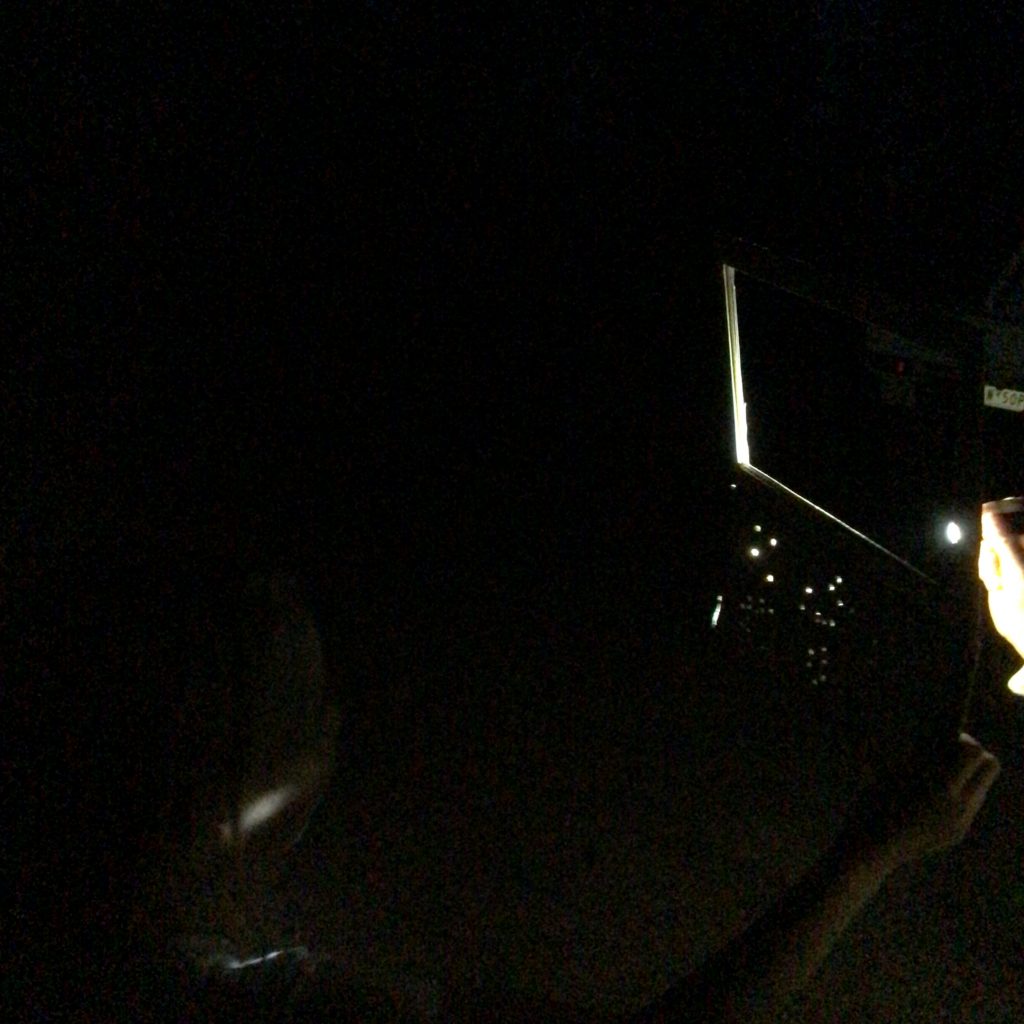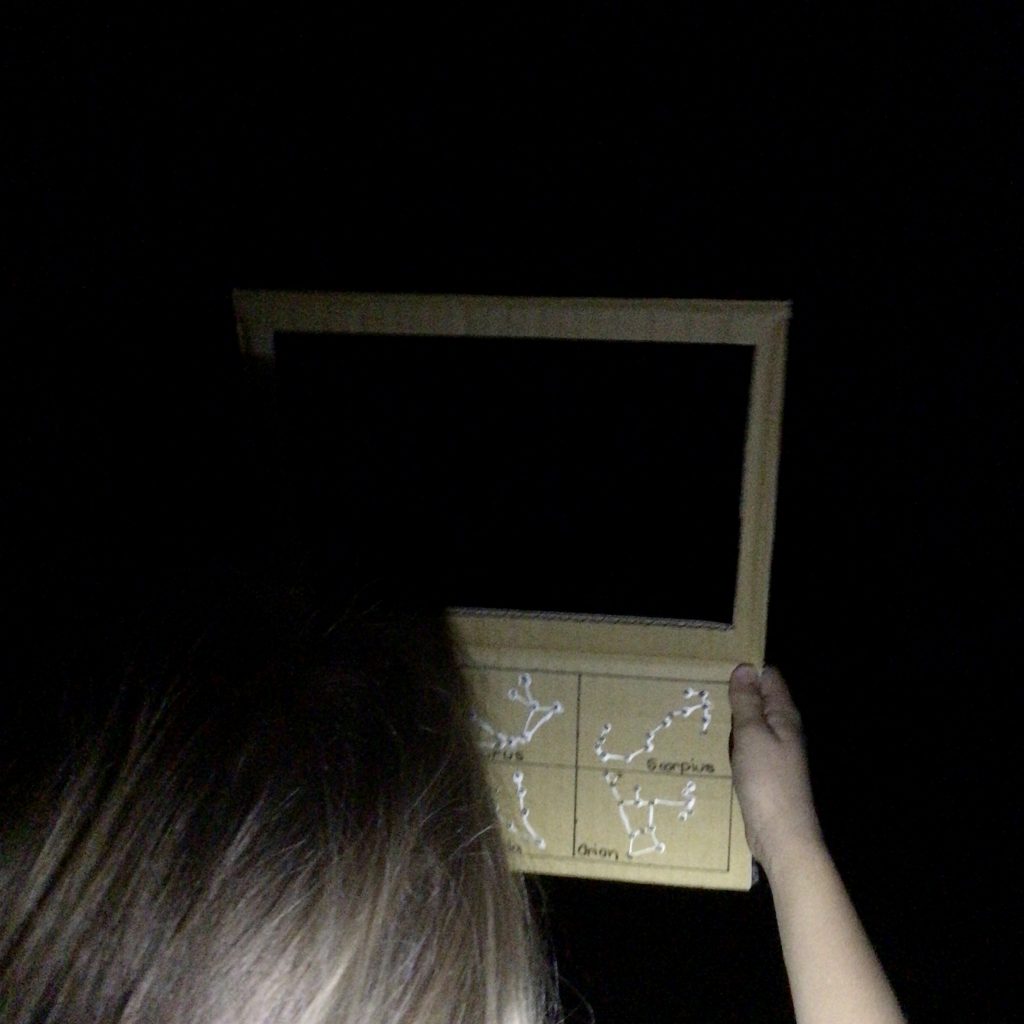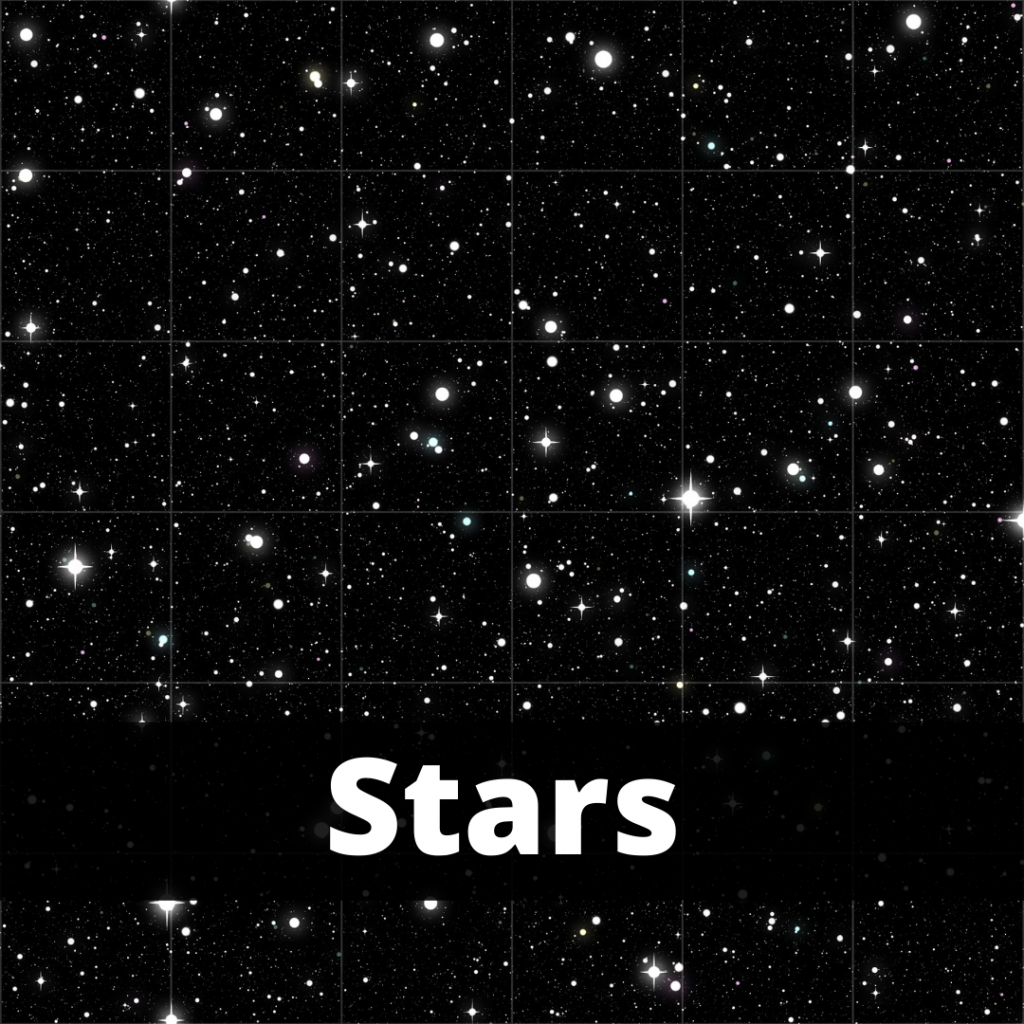
Over the Easter break we enjoyed a trip to the Bendigo Planetarium, it is part of the Science and Technology Discovery Center. It was fun to sit in a beanbag – filled room and gaze at the ceiling, while our guide took us on a trip into the night sky.
The children recognised some of the common star constellations that we see each night in the southern sky. Of course most famously the Southern Cross was instantly recognisable.
The Southern Cross, also known as the Crux, is probably the most well-known constellation in the southern hemisphere. It is made up of four main stars. They are named Alpha, Beta, Gamma and Delta Crucis. But within the borders of the constellation there are actually 49 stars.
- Alpha Crucis or Acrux is a triple star, rich blue in colour and 321 light-years from Earth. Triple stars may be in a physical system where the two stars are binary and the third orbits at a greater distance than that of the binary orbit. Or the stars may be an optical triplet where they are not related but are seen close to each other.
- Beta Crucis or Mimosa is a blue giant star and is 353 light-years from Earth.
- Gamma Crucis or Gacrux is an optical double star. The primary star is a red giant, 88 light-years from Earth. Double stars can be either optically double or binary systems. An optical double occurs when unrelated stars are seen close together. A double star which is part of a binary system is when two stars are gravitationally bound.
- Delta Crucis or Imai is a blue-white star, 345 light years from Earth.
Stars are defined by their mass, temperature, spectra (the elements that they absorb) and brightness. In the Southern Cross we have Blue, Red Giant and Blue/White Stars.
The main star types that you will come across are:
Red Super Giants -These stars form when high mass stars use most of the hydrogen at their core. They are near the end of their life cycle. An example of a Red Super Giant is Betelgeuse.
Red Giants – Red giants are large stars that have low mass. Red giants are in a late phase of the star cycle and have burned most of the hydrogen at the core. Example Arcturus.
Blue Giants – Are larger than yellow dwarfs but the smallest of the giants. Blue giants are very hot, and are quite rare compared to other stars. Examples of Blue Giants are Beta Crucis/Mimosa and Siruis.
Yellow Dwarfs – Yellow dwarfs are in the stable range of their life cycle. Yellow dwarfs are similar in size to our sun. They are a size between red dwarfs and blue giants. Our Sun is an example of a Yellow Dwarf
Red Dwarfs – These stars are one of the most common stars in the Milky Way galaxy. They are between the White Dwarf and the Yellow Dwarf in size. An example of a Red Dwarf is Proxima Centauri.
White Dwarfs – White dwarfs are the smallest type of stars, with a size similar to earth, with extreme mass. The mass of these stars can be equal to that of the sun. Procyon B and Siruis B are examples of White Dwarfs.
Brown Dwarfs – Brown dwarfs are not officially stars and not officially planets, but somewhere in between. Brown dwarfs are around the same size of a large planet in the solar system. Gliese 229B is an example.
Neutron Stars – These are the collapsed cores of very large stars. These stars can be the smallest stars, typically only 20km in diameter, however some neutron stars can also be very large, which is why they cannot be classed as the smallest. PSR J0108-1431 is a neutron star.
and Black Holes – Black holes are formed when giant stars explode at the end of their lifecycle.
Here are some 3-Part Cards to help your children learn about the 6 most common star types. (Print two copies. One leave as a control card, the other cut the label from the picture and definition. Have the children match the two separated cards to the control card.)
Some other star constellations that were recognisable to the children were:
- Orion
- Scorpius
- Centaurus
- Gemini
These constellations are visible now in the Southern Hemisphere. Autumn is a great time of year to star gaze as the nights are longer and it is not as cold as it will be in Winter.
Here is an idea for a simple star viewer to make with your children.

Shine a torch through the small constellation holes, gaze at the sky through the large cut-out hole! During the day you can place a sky map under the cut-out to search for the constellations.
You can download a free Evening Sky Map for the relevant month and hemisphere from SkyMaps.com. Use this map to work out where to look to see the constellations. Or use a phone or iPad App like NightSky.
If you live in the Southern Hemisphere the Atlas of the Southern Night Sky is a fantastic guide to learning all about the stars, constellations and galaxies.

Why not find a comfy chair, take a cup of hot chocolate and enjoy some star gazing tonight?
